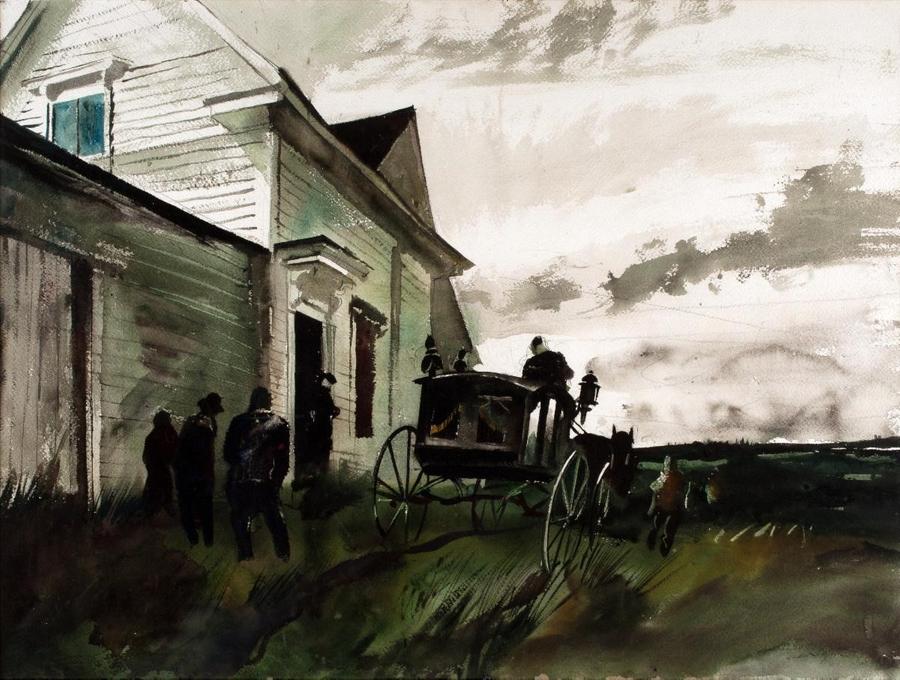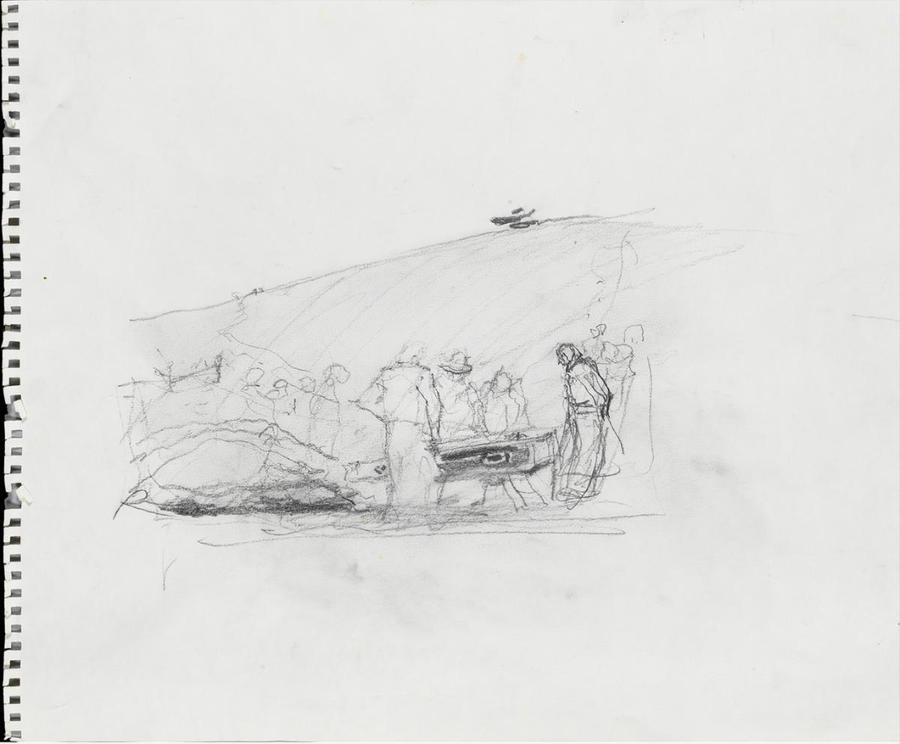Colby College Museum of Art
through October 16, 2022

Life and Death shows the artist engaging with his own mortality
A new exhibition in Waterville, Maine, at the Colby College Museum of Art, Andrew Wyeth: Life and Death, offers the first public presentation of a recently rediscovered series of drawings in which the artist Andrew Wyeth (1917-2009) imagined his own funeral.
Created in the early 1990s, the drawings, now known collectively as the Funeral Group, depict Wyeth’s friends, neighbors, and wife, Betsy, surrounding a coffin at the base of Kuerner’s Hill in Chadds Ford, Pennsylvania, a site the artist long associated with death. Some of the drawings offer a view inside the coffin, revealing a rare self-portrait.

“Conceived before the current moment, this exhibition offers viewers a powerful resource for sense-making during a time that continues to test our resilience and ask each of us to recognize human interdependence and vulnerability,” said Jacqueline Terrassa, Carolyn Muzzy director of the Colby Museum.
The drawings in the exhibition represent a selection of the approximately fifty works that have been identified as part of the Funeral Group. In 2018, Wyeth’s son, artist Jamie Wyeth, received just over twenty drawings, which had been preserved privately in the home of his father’s friends George and Helen Sipala in Chadds Ford. Since 2020, additional funeral scene sketches have been located in the collection of the Wyeth Foundation for American Art.
Andrew Wyeth: Life and Death connects these sketches to Wyeth’s decades-long engagement with death as an artistic subject and places him in rare conversation with artists who also used self-portraiture to confront their mortality.
“Because the work of Andrew Wyeth has long been regarded as intensely personal and mysterious, it has often been situated outside the story of American art since the 1960s,” said Tanya Sheehan, William R. Kenan Jr. Professor of Art at Colby College and the exhibition curator.
“This exhibition shows that Wyeth was engaged in existential questions that have long preoccupied conceptual, performance and activist artists.”
Wyeth’s contemporaries, Andy Warhol, George Tooker, and Duane Michals, as well as later generation artists David Wojnarowicz, Janaina Tschäpe and Mario Moore, are featured in the exhibition. Several of their works foreground the harsh reality that death is always closer to some Americans than to others, by virtue of their economic status, sexuality, and racial or ethnic identities.
Andrew Wyeth: Life and Death is on view through October 16, 2022. Support for the exhibition is provided by the Wyeth Foundation for American Art.
Catalogue
American painter Andrew Wyeth (1917–2009) lived his entire life in his birthplace of Chadds Ford, Pennsylvania, and his summer home in mid-coast Maine. His seven-decade career was spent painting the land and people that he knew and cared about. Renowned for his tempera painting Christina's World (1948), Wyeth navigated between artistic representation and abstraction in a highly personal way.



